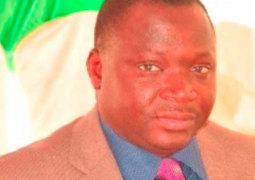The steering committee of Programme of Work on Protected Areas (PoWPA) recently held a consultation meeting at the Parks and Wildlife Management headquarters in Abuko.
Speaking at the official opening of the meeting, Momodou L. Kassama, Principal Conservation Officer, on behalf of the director of Parks and Wildlife Management, underscored the significance of the meeting.
This will avail the community the opportunity to scout out relevant information in supporting the implementation of the second phase of the project, he said.
Mr Kassama further implored the experts in the committee to leave no stone unturned to ensure that all the relevant and accurate information needed in the smooth operation of the project are obtained to expedite the implementation of the PoWPA second phase.
In a PowerPoint presentation, Kawsu Jammeh, PoWPA project coordinator, said the first phase of the PoWPA implementation has enabled The Gambia to sufficiently inform and educate national actors regarding protection and sustainable use of biodiversity.
When the network was initiated, a model was put in place referred to as ‘resource policies and benefit sharing’ that enable villages or communities to safeguard the resources around them and make optimal benefit of what is harvested.
He said a draft legal norm was designed to promote diversification of protected areas governance, which allows designation of purely community-owned and privately-managed regimes in addition to joint or shared management and purely state-managed regimes.
“Already negotiations have been reached with series of communities interested in establishing PAs and Biosphere Reserves,” he disclosed.
The second phase of the PoWPA referred to as ‘Gambia Protected Area Network and Community Livelihood Project’ is looking at four key priorities.
The first component is ‘assessing gaps in protected area network’, which requires doing a nationwide ecological and institutional gap analysis, which will enable us to establish more PAs, to help increase PA coverage from 4.27% to 10% by 2016.
The second component, ‘assessing PA governance’, is focused on implementing the GamPan Agreement, which includes organizing regional and national congresses, organizing park-based governance meetings, building the capacity of GamPan and establishing livelihood activities for actors and park communities.
The third component is about assessing PA capacity needs requirement engaging an expert to complete a study and provide a strategy which will be implemented, which may however include establishing a Biodiversity Research and Training Centre, develop standard modules and run courses for national actors.
It may also include providing tools for park managers, such as motorbikes. The fourth ‘Assessing policy gaps in protected area management’ requires revising the National Biodiversity Strategy and Action Plan and Biodiversity/Wildlife Policy and Act.
“PoWPA, which is an intergovernmental initiative agreed to by 194 states plus the European Union, is the most ambitious global environment programme,” he said.
“Our commitment as a nation requires us to implement it through a multifunctional stakeholder engagement without which the land and waterscape around us will disappear irreversibly in some cases.”
In his closing remarks on the occasion, Ousainou Touray, project coordinator of GAMBIS, on behalf of the director of DPWM, hailed the committee for what he called an interactive and educative session.
The project will enhance the capacities of the target beneficiaries by equipping them with the skills required of the protected area staff through regular upgrading of their skills and knowledge on protected areas management standards.
He commended all and sundry for their active participation during the daylong meeting and urged them to be ready to serve the project anytime their technical and other services are needed.


